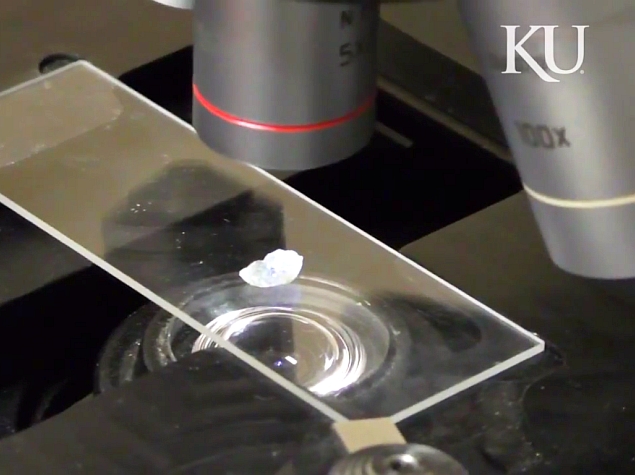- Home
- Science
- Science News
- New Technique May Help Detect Traces of Alien Life on Mars
New Technique May Help Detect Traces of Alien Life on Mars

Humans have always fantasised of "little green men" from Mars, and scientists have now come up with a new way to search for traces of alien life on the red planet.
Visits to Mars by unmanned probes from Nasa and the European Space Agency have found evidence that a prime condition for life once may have existed: water.
"There has been a tremendous amount of very exciting findings this year that Mars once contained actively flowing, low-saline, near-neutral-pH water - pretty much the type of water where you find life on Earth today," said Alison Olcott Marshall, assistant professor of geology at the University of Kansas.
"This has made people think that it's possible that life could have existed on Mars, although most researchers agree it's unlikely to exist today - at least on the surface - as conditions on the surface of Mars are incredibly harsh," said Marshall.
Marshall is working with her colleague, Craig Marshall, associate professor of geology at KU, to improve the way scientists detect condensed aromatic carbon, thought to be a chemical signature of astrobiology.
"If we're going to identify life on Mars, it will likely be the fossil remnants of the chemicals once synthesised by life, and we hope our research helps strengthen the ability to evaluate the evidence collected on Mars," Craig said.
If traces of ancient biology are detected in Mars, the KU researchers want to make sure the evidence is more conclusive.
According to a recent paper in the journal Philosophical Transactions of the Royal Society, by itself Raman spectroscopy is able to screen for carbonaceous material, but it can't determine its source - thus the technology needs to be supplemented in order to determine if life exists on Mars.
"Raman spectroscopy works by impinging a laser on a sample so the molecules within that sample vibrate at diagnostic frequencies," Craig said.
"Measuring those frequencies allows the identification of inorganic and organic materials. It's insufficient because however the carbonaceous material is made, it will be the same chemically and structurally, and thus Raman spectroscopy cannot determine the origin," said Craig.
Researchers call for the use of gas chromatography/mass spectroscopy to supplement Raman spectroscopy and develop more conclusive evidence of ancient extraterrestrial life.
Catch the latest from the Consumer Electronics Show on Gadgets 360, at our CES 2026 hub.
Related Stories
- Samsung Galaxy Unpacked 2025
- ChatGPT
- Redmi Note 14 Pro+
- iPhone 16
- Apple Vision Pro
- Oneplus 12
- OnePlus Nord CE 3 Lite 5G
- iPhone 13
- Xiaomi 14 Pro
- Oppo Find N3
- Tecno Spark Go (2023)
- Realme V30
- Best Phones Under 25000
- Samsung Galaxy S24 Series
- Cryptocurrency
- iQoo 12
- Samsung Galaxy S24 Ultra
- Giottus
- Samsung Galaxy Z Flip 5
- Apple 'Scary Fast'
- Housefull 5
- GoPro Hero 12 Black Review
- Invincible Season 2
- JioGlass
- HD Ready TV
- Laptop Under 50000
- Smartwatch Under 10000
- Latest Mobile Phones
- Compare Phones
- OPPO Reno 15 Pro Max
- Honor Win RT
- Honor Win
- Xiaomi 17 Ultra Leica Edition
- Xiaomi 17 Ultra
- Huawei Nova 15
- Huawei Nova 15 Pro
- Huawei Nova 15 Ultra
- Asus ProArt P16
- MacBook Pro 14-inch (M5, 2025)
- OPPO Pad Air 5
- Huawei MatePad 11.5 (2026)
- Xiaomi Watch 5
- Huawei Watch 10th Anniversary Edition
- Acerpure Nitro Z Series 100-inch QLED TV
- Samsung 43 Inch LED Ultra HD (4K) Smart TV (UA43UE81AFULXL)
- Asus ROG Ally
- Nintendo Switch Lite
- Haier 1.6 Ton 5 Star Inverter Split AC (HSU19G-MZAID5BN-INV)
- Haier 1.6 Ton 5 Star Inverter Split AC (HSU19G-MZAIM5BN-INV)

















